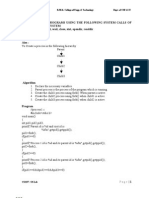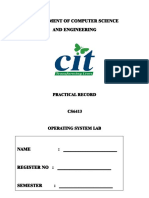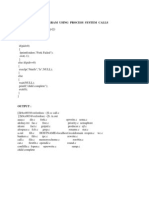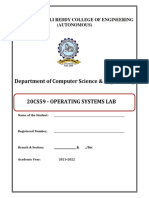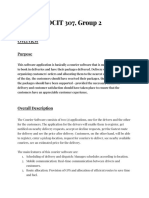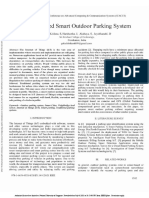0% found this document useful (0 votes)
35 views30 pagesAdvanced Operating System
The document is a lab manual for advanced operating systems, detailing experiments that involve writing C programs to demonstrate UNIX system calls, I/O operations, and CPU scheduling algorithms. It includes specific aims, descriptions, and sample code for experiments on process control, file handling, simulating UNIX commands, and implementing scheduling algorithms like FCFS, SJF, Priority, and Round Robin. Each experiment concludes with expected and actual outputs, along with results confirming successful execution.
Uploaded by
2020csm.r10Copyright
© © All Rights Reserved
We take content rights seriously. If you suspect this is your content, claim it here.
Available Formats
Download as PDF, TXT or read online on Scribd
0% found this document useful (0 votes)
35 views30 pagesAdvanced Operating System
The document is a lab manual for advanced operating systems, detailing experiments that involve writing C programs to demonstrate UNIX system calls, I/O operations, and CPU scheduling algorithms. It includes specific aims, descriptions, and sample code for experiments on process control, file handling, simulating UNIX commands, and implementing scheduling algorithms like FCFS, SJF, Priority, and Round Robin. Each experiment concludes with expected and actual outputs, along with results confirming successful execution.
Uploaded by
2020csm.r10Copyright
© © All Rights Reserved
We take content rights seriously. If you suspect this is your content, claim it here.
Available Formats
Download as PDF, TXT or read online on Scribd
/ 30


